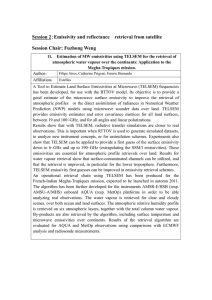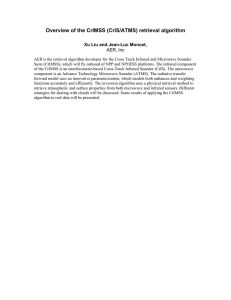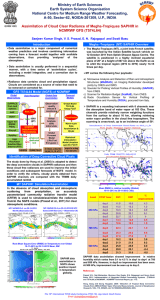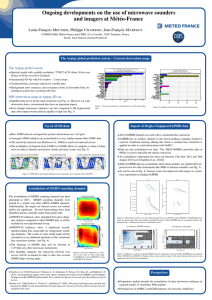Retrieval of atmospheric water vapour profile using the Megha-Tropiques
advertisement
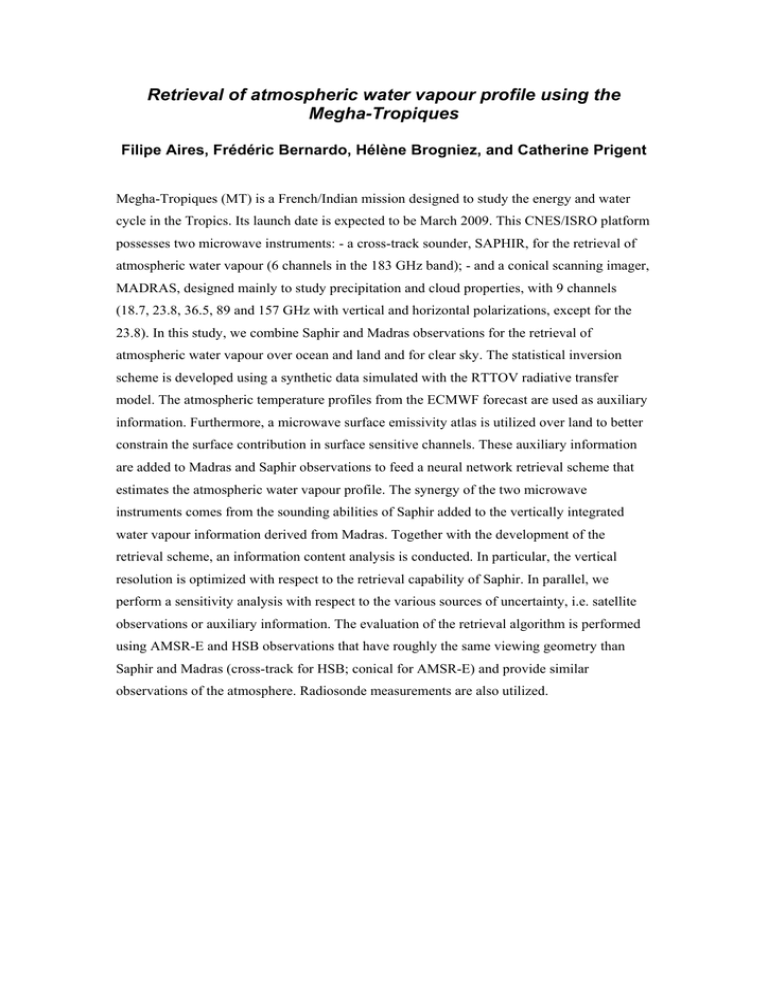
Retrieval of atmospheric water vapour profile using the Megha-Tropiques Filipe Aires, Frédéric Bernardo, Hélène Brogniez, and Catherine Prigent Megha-Tropiques (MT) is a French/Indian mission designed to study the energy and water cycle in the Tropics. Its launch date is expected to be March 2009. This CNES/ISRO platform possesses two microwave instruments: - a cross-track sounder, SAPHIR, for the retrieval of atmospheric water vapour (6 channels in the 183 GHz band); - and a conical scanning imager, MADRAS, designed mainly to study precipitation and cloud properties, with 9 channels (18.7, 23.8, 36.5, 89 and 157 GHz with vertical and horizontal polarizations, except for the 23.8). In this study, we combine Saphir and Madras observations for the retrieval of atmospheric water vapour over ocean and land and for clear sky. The statistical inversion scheme is developed using a synthetic data simulated with the RTTOV radiative transfer model. The atmospheric temperature profiles from the ECMWF forecast are used as auxiliary information. Furthermore, a microwave surface emissivity atlas is utilized over land to better constrain the surface contribution in surface sensitive channels. These auxiliary information are added to Madras and Saphir observations to feed a neural network retrieval scheme that estimates the atmospheric water vapour profile. The synergy of the two microwave instruments comes from the sounding abilities of Saphir added to the vertically integrated water vapour information derived from Madras. Together with the development of the retrieval scheme, an information content analysis is conducted. In particular, the vertical resolution is optimized with respect to the retrieval capability of Saphir. In parallel, we perform a sensitivity analysis with respect to the various sources of uncertainty, i.e. satellite observations or auxiliary information. The evaluation of the retrieval algorithm is performed using AMSR-E and HSB observations that have roughly the same viewing geometry than Saphir and Madras (cross-track for HSB; conical for AMSR-E) and provide similar observations of the atmosphere. Radiosonde measurements are also utilized.
